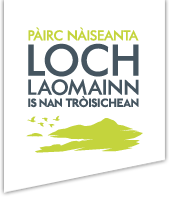
Lochdown Learning: Other resources
We’ve collated a list of fantastic education resources from our partners and external sources, which can help with homeschooling during #Lochdown. Spanning a wide range of topics, these resources will help to strengthen your connection to nature, and can be carried out either in a garden or local greenspace.
Outdoor Learning Directory
This brilliant website is a portal that signposts to a huge range of partner resources on subjects that have been designed to be used by schools and parents/carers to support home learning. Search their database and get involved in things like citizen science, STEM learning and outdoor maths.
Outdoor and Woodland Learning
This website has resources grouped by learning age from early years through to secondary. Some stand-out options are:
- The carbon storage calculator – this tool works really well when paired with our Climate Change Education Pack.
- ‘The World Beneath our Feet’: Connecting soils and curriculum – this can also be paired with our Climate Change Education Pack.
- Tree measuring numeracy activity
- Environmental Science: Native woods
- Social science: The first foresters
- Literacy: Wolf brothers
National Parks UK
On the National Parks UK website you’ll find loads of free resources and lesson plans, designed to get children interested in topics like tourism, history, land use and geography.
John Muir Award
The John Muir Award has several comprehensive resource guides for upper primary and above on topics such as:
Learning Through Landscapes
This website has some fantastic resources for cross-curricular homeschooling outdoors, such as activities for home learning and outdoor homework.
Mindstretchers
This non-profit virtual nature school has a variety of resources for early years through to upper primary school age children.
RSPB
RSPB’s resources are aimed at primary school age children, with a focus on nature connections. There’s a variety of lesson plans and family wild challenges.
Trees for Schools
This resource has been published by The Woodland Trust. There’s a variety of teaching resources and outdoor learning activities.
East Ayrshire Learning Outdoors Support Team (LOST)
This website has a collection of support links for parents who are homeschooling children of all ages.
OPAL
X-Polli:Nation is a National Geographic project that shares approaches and tools between members of the public, scientists, technologists and educators in order to support pollinators, people and the practice of citizen science. Data is still being collected and recorded, so it’s a fantastic opportunity to get involved in a real-life study. You can complete this in a garden or local green space. It can also support families / people completing a John Muir Award.
Royal Highland Education Trust
The Royal Highland Education Trust works with volunteers to provide free educational activities and experiential learning opportunities linked to the Curriculum for Excellence. There are presentations, handouts, activities and lots more to engage your learners all in one place.
STEM Glasgow
The Glasgow Science Festival Resource Pack covers lots of topics such as science, maths, technology and engineering.
Encounter Edu
Encounter Edu designs and delivers STEM and global learning programs. The Oceans Plastic resource for children aged 11-14 is particularly interesting.
The Wildlife Trusts
The Wildlife Trusts have created some wonderful online nature activities to encourage everyone to tune in to wildlife at home this spring, and to help people find solace in nature during tough times. On the “Looking after yourself and nature” web page you will also find insect identification sheets, links to their wildlife YouTube channel and a variety of nature webcams across the UK.
Greenspace Scotland
Greenspace Scotland has compiled a list of activities and ideas to keep people connected to greenspaces, parks, nature and each other while social distancing and isolating. The listing consists of links to organisations providing resources, projects, events and more. You can view the interactive digital map to locate greenspaces in a area.
Blairvadach Outdoor Education Centre
The Blairvadach Outdoor Education Centre, located just outside of the National Park in Rhu, has published a workbook to give young people the chance to try out some of the things you would experience during a Blairvadach Residential. Some of the activities can be done when you’re out for a walk, but most can be done at home with little or no help from adults.
The Mountains and the People
This education pack has been developed to complement and enhance the geography curriculum in Scotland and focuses on the competing pressures of recreation and land management in the Scottish countryside. It may also be useful for other subjects such as environmental science, rural skills, as well as groups completing the John Muir Award. The resource references both of Scotland’s National Parks and links to one of our Geography case studies on footpath maintenance.
Saving Scotland’s Red Squirrels
The activities created by Saving Scotland’s Red Squirrels allow you to bring nature indoors. Get crafty with everyday materials from around your home, or explore your garden or local patch with a scavenger hunt challenge.
Our red squirrel case study is another great resource for developing understanding around the environmental threat posed by invasive non-native species. You can also download a squirrel activity calendar to show how the changing seasons affect the red squirrel population.
Scottish Wildlife Trust
The Scottish Wildlife Trust has a fantastic Learning Zone, where you’ll find a wide range of activity ideas and resources to get children engaging with nature. There are both indoor and outdoor activities for every age and stage and, with some linked to Scotland’s Curriculum for Excellence, they’re perfect for group leaders and teachers, as well as those looking for a day of fun with the family.

